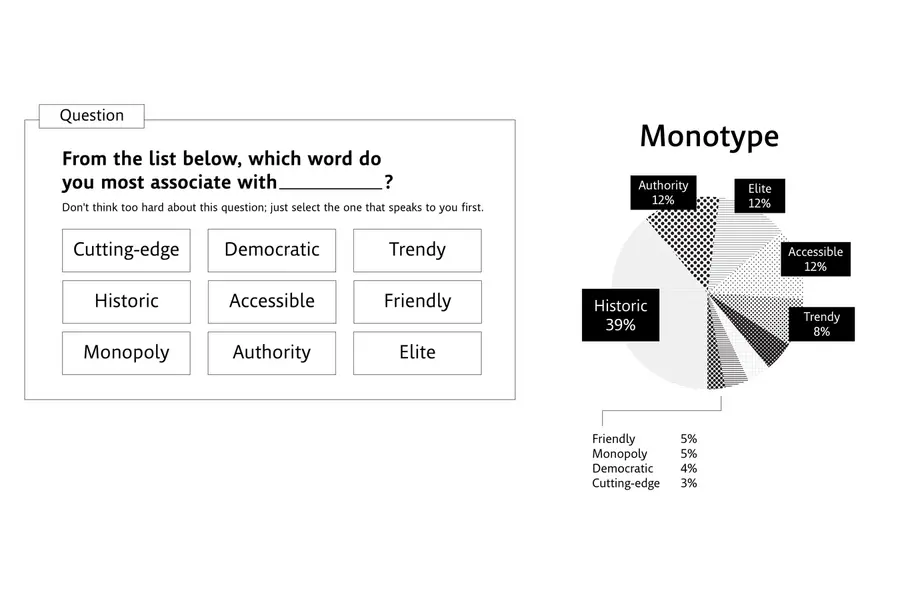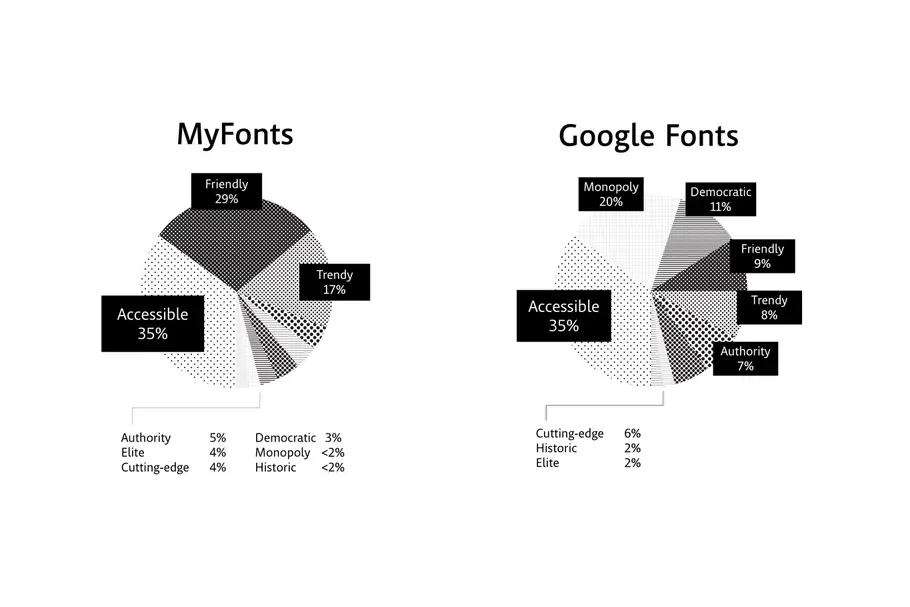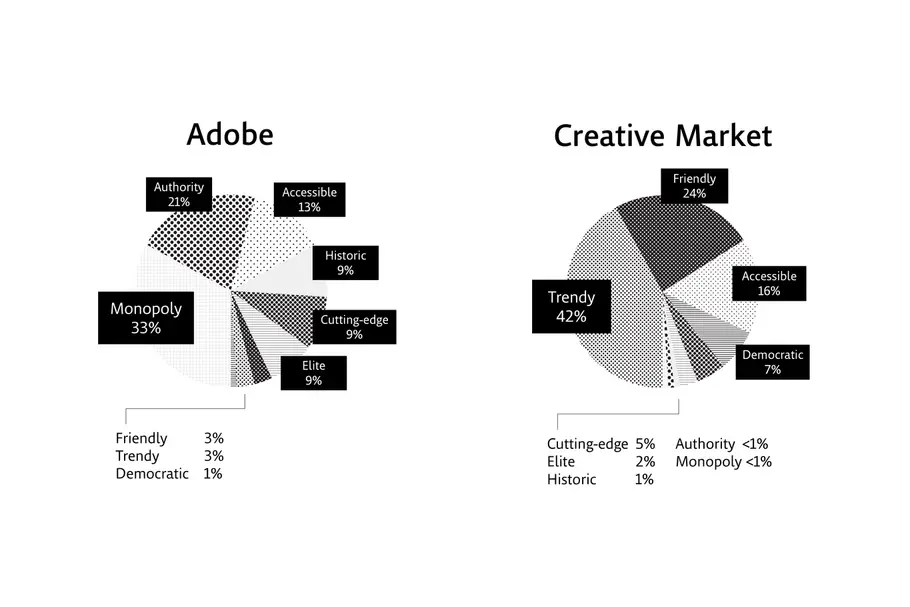Can fonts be sexy? Tell us in the 2019 Font Purchasing Habits Survey.
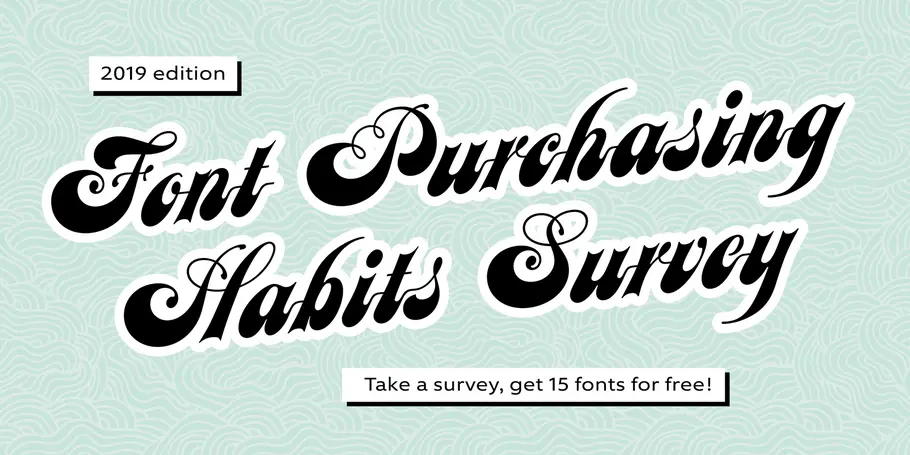
How much are designers willing to pay for high-quality fonts? Are variable fonts ready for showtime? And most important: Can fonts be sexy? These are among the mysteries the fourth annual Font Purchasing Habits Survey seeks to unravel.
Part passion project and part market research, the Font Purchasing Habits Survey is the brainchild of Mary Catherine Pflug, Foundry Manager at MyFonts. For Pflug, the project is an attempt to shed a little light on a rapidly changing industry and help everyone involved—foundries, type designers, distributors, and graphic designers alike—understand the various dynamics at play.
“I got my start in the type industry as a type designer,” Pflug says. “After releasing two retail typefaces, I became more interested in reaching and understanding font customers than creating typefaces.
“While researching the type industry, I found plenty about designing type and the history of type, but very little on the business of type and even less about the actual consumers and users of type. It became clear to me that I could best contribute to this industry by helping type makers and sellers understand their customers. It was a no-brainer.”
Standing out from the crowd
The project comes at a pivotal moment for the broader type design community. Designers have a wide variety of free fonts at their disposal, and piracy poses a major problem for foundries large and small. The survey can help foundries better understand how to deliver value to their customers and set themselves apart from the free options available.
“The number one quality customers look for when evaluating fonts for purchase, across all three surveys so far, is the number of styles in a family,” Pflug says. “This makes sense to me; people want options! When you’re purchasing a typeface family for a project, you want to ensure that your choice is future-proof. As your design evolves, you need your typeface to grow with the project and be able to handle any future hierarchy or layout changes.”
The survey also includes questions focused on trust—a major differentiator for distributors and foundries. “Trust is very important because fonts are inherently complex products,” Pflug explains. “Customers must evaluate many aspects of a font family, like how well the font fits with their design, design quality, spacing in various situations, character sets, and OpenType features, to name a few. Having a distributor or foundry that helps make your decision easier by showing you the right information and tools when browsing creates trust and loyalty.”

“It’s good to see that customers expectations and prices in the market are correlated,” according to Pflug. “This means that we’re appealing to the most customers and creating the best customer experience.”
It also helps when customers know, or feel they know, the person behind the font. “People who personally know a type designer are willing to spend more money on fonts and are less motivated by discounts,” Pflug says. She thinks that despite the commoditization of fonts in general, people are much more open to paying for fonts, even happy to pay for fonts, when they feel some connection to the person that created them. In the 2017 survey, people were willing to spend $237 for a high quality “workhorse” typeface family if they knew a type designer, compared to $127 if they didn’t.
“This could be because people who know type designers have a greater appreciation for the challenges and time involved in making a quality typeface,” Pflug says. “It could also be that people who know type designers are more knowledgeable about type design in general and want more advanced fonts with added font features. I’m hoping this year’s survey reveals more details about how people interact with type designers and their perception of type designers.”
This year’s survey could also yield useful insights about variable fonts. Pflug asked about variable fonts in the past two surveys, and the responses were muted, indicating that the industry had more work to do to help customers learn about and understand variable fonts.
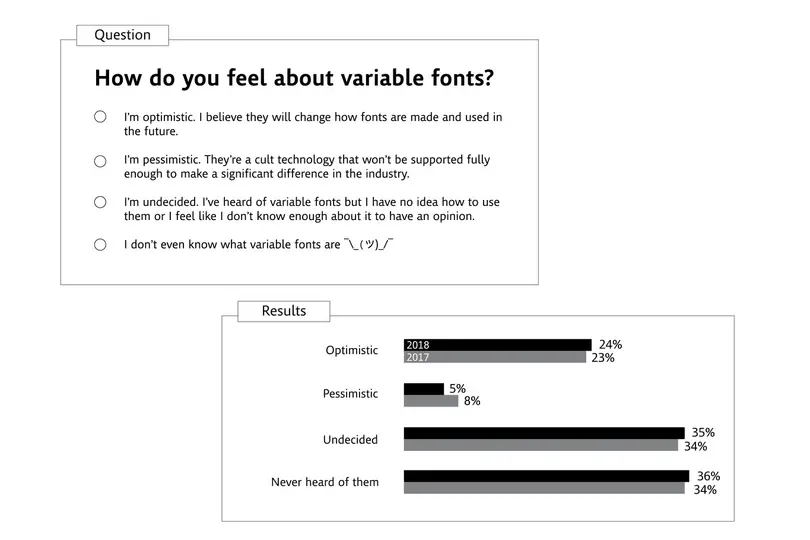
This year’s responses to questions about variable fonts will reveal a lot about how whether the community is ready for them or not.
This year could be different, Pflug says. “There have been more variable font retail releases and broader support for the technology in more software. I’m very interested to see if the results of this question change in 2019.”
Preparing for the future
Whatever challenges the type industry is facing, there is a ton of opportunity for foundries and type designers willing to evolve. One of Pflug’s goals for the survey is to tease out a sense where the industry is going, not just where it is.
“There is always going to be a need for new, exciting font designs,” Pflug notes. “However, the world is changing quickly. There is a huge opportunity to simplify licensing and font management workflows. Licensing that may have been suitable in the past should evolve to match the workflow of creatives today.
“Based on survey results from 2018, font users think font licensing is confusing and aren’t happy with existing font subscriptions. There are new questions in the 2019 survey to explore this further and identify the key pain points for font users.”
For MyFonts, past survey responses have directly informed some major changes to the site’s layout and UX. “We recently released a new family page design to improve customer’s experience evaluating fonts, and many of the decisions we made were based directly from the results of the 2018 survey,” Pflug explains. “The survey told us that customers really want to see all the characters in a font, so we moved the “Glyphs” module to a more prominent location in the design. Customers also care about OpenType features like alternates, ligatures, and kerning, so we made information about these features easier to find and simpler to understand.”
Take the survey
The 2019 Font Purchasing Habits Survey will be open through October 11. Everyone who completes the survey will receive 15 free fonts from MyFonts. So take the survey, tell all your colleagues and designer friends to take the survey, and stay tuned for the results later this year.












